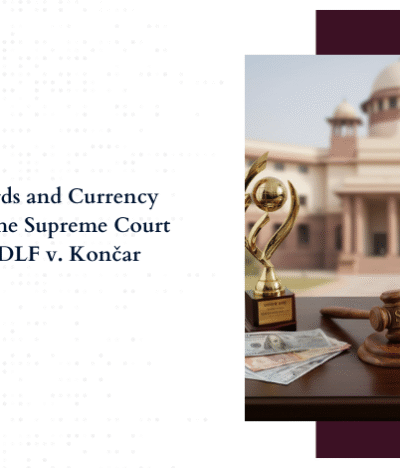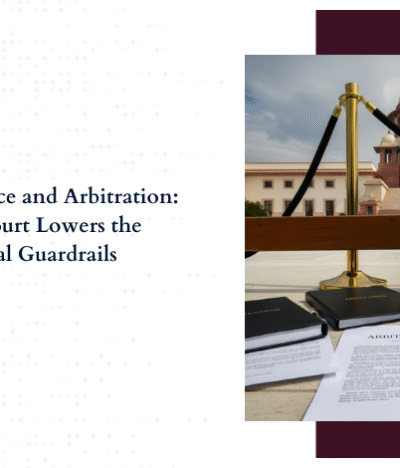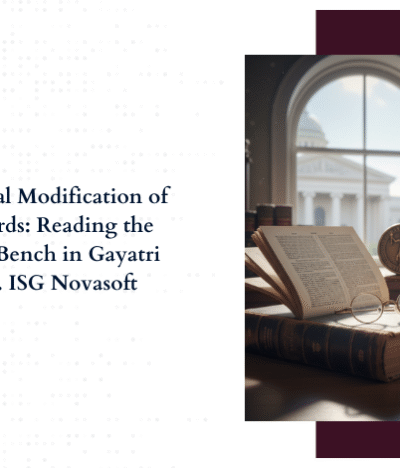In a judgement of significant relevance to commercial and criminal law practice, the Supreme Court in Dhanasingh Prabhu v. Chandrasekar & Anr., has clarified the maintainability of a complaint under Section 138 of the Negotiable Instruments Act, 1881 (NI Act) where only individual partners of a firm are arrayed as accused, while the partnership firm itself is not named.
The case arose from a business transaction wherein the complainant advanced a sum of Rs. 21 lakhs to a partnership firm, Mouriya Coirs, engaged in coir manufacturing. A cheque issued by one of the partners in the name of the firm was dishonoured on presentation. The complainant initiated proceedings under Section 138 NI Act against both individual partners but did not issue notice to, or array, the firm as an accused. The Madras High Court quashed the complaint for this procedural omission. The matter reached the Supreme Court.
The bench comprising Justices B.V. Nagarathna and Satish Chandra Sharma reversed the High Court’s ruling and restored the complaint. The Court held that even in the absence of arraignment of the partnership firm or issuance of statutory notice to it, the complaint against the individual partners remains legally tenable.
Legal Issues Before the Supreme Court
The core question before the Court was whether a complaint under Section 138 of the NI Act is maintainable when filed only against the individual partners of a firm, without impleading the firm itself as an accused or issuing notice to it.
The High Court had relied on Aneeta Hada v. Godfather Travels & Tours (P) Ltd., (2012) 5 SCC 661, which mandates that in cases involving companies, the company must be arraigned as an accused before its directors can be held vicariously liable under Section 141 of the NI Act. The respondents contended that the same principle must apply to partnership firms.
Rejecting this argument, the Supreme Court held that the principle in Aneeta Hada applies specifically to incorporated entities like companies, which have a distinct legal personality. The Court drew a sharp distinction between companies and partnerships, emphasising that while companies are juristic persons separate from their directors, partnerships are not distinct from the individuals who constitute them.
The Court also examined the statutory framework under Section 141 of the NI Act, which extends the liability for offences committed by a “company” (including a “firm” by virtue of the Explanation) to persons in charge of its affairs. The Court interpreted this provision to hold that partners of a firm are personally, jointly, and severally liable for the firm’s acts. This is in contrast to the vicarious liability model applicable to directors of companies.
The Court’s Reasoning
The Court’s reasoning was anchored in the fundamental legal character of a partnership under Indian law. Relying on Section 4 and Section 25 of the Indian Partnership Act, 1932, the Court reiterated that a partnership firm is merely a compendious name for the partners constituting it. It has no independent legal identity. This means the liabilities of the firm are, in law, the liabilities of the partners themselves.
Importantly, the Court observed that while a company can act independently of its directors, a partnership firm cannot act independently of its partners. Hence, when a cheque is dishonoured in the name of the firm, it is effectively the act of the partners.
The judgement distinguishes between the vicarious liability applicable in company prosecutions (as in Aneeta Hada) and the joint and several liability applicable to partners in a firm. The Court stressed that partners are not liable because of a statutory deeming provision (as directors are), but because they are the actual actors behind the firm’s transactions.
Consequently, the omission to arraign the firm or to issue a separate notice to it was not fatal to the prosecution. The notice to the partners was deemed sufficient, and the firm’s liability was treated as coextensive with that of its partners.
Clarification of Judicial Precedents and Doctrinal Analysis
The Supreme Court undertook a meticulous examination of earlier rulings, including Dilip Hariramani v. Bank of Baroda, 2022, and G. Ramesh v. Kanike Harish Kumar Ujwal, (2020). The Court clarified that in Dilip Hariramani, relief was granted because the notice was issued only to the authorised signatory and not to all partners, and the firm was not named as an accused. In contrast, in the present case, both partners received notice, although the firm was not named in the complaint.
The Court reiterated the settled principle that a firm is not a legal entity distinct from its partners. Referring to landmark precedents like Salomon v. Salomon & Co. Ltd., [1897] AC 22 (HL), and Indian cases such as Dulichand Laxminarayan v. CIT, AIR 1956 SC 354, and CIT v. R.M. Chidambaram Pillai, (1977) 1 SCC 431, the Court underscored the point that a partnership firm is not a juristic person—it is simply a collective term for the partners.
The Court reinforced that Section 141 NI Act incorporates a legal fiction for the purposes of prosecution, treating a firm as equivalent to a company. However, in the context of partnerships, this fiction does not transform the nature of partner liability into one of vicariousness. Rather, it codifies what is already the legal position under partnership law: the partners are directly, jointly, and severally liable for all acts of the firm.
Key Legal Distinctions Between Firms and Companies
The judgment also delineates the doctrinal differences between partnership firms and companies to justify the differentiated treatment under the NI Act:
- Separate Legal Entity: A company has a distinct legal personality separate from its shareholders and directors. In contrast, a firm is not a separate juristic entity. The firm’s identity is inextricably tied to the partners who constitute it.
- Perpetual Succession: A company continues to exist irrespective of changes in shareholding. A partnership, however, may dissolve upon death, retirement, or insolvency of a partner, unless otherwise agreed.
- Liability: Directors of a company are typically shielded by the doctrine of limited liability, whereas partners are personally, jointly, and severally liable for the debts and liabilities of the firm, including criminal liability for acts like cheque dishonour.
- Agency: In a partnership, each partner acts as an agent for the others. In a company, directors are agents of the company, which is a separate person in law.
These structural differences explain why the Supreme Court held that the logic of Aneeta Hada does not carry over to partnerships. While directors of a company can be held vicariously liable only if the company is arraigned, no such precondition exists for holding partners liable, as their liability is not derivative—it is direct.
Conclusion
The Supreme Court conclusively held that a complaint under Section 138 of the NI Act is maintainable against the individual partners of a firm, even if the firm itself is not named as an accused or served with a statutory notice. Given that a firm has no independent juristic existence apart from its partners, the liability for dishonour of a cheque issued in the firm’s name squarely falls on the partners—jointly and severally.
In this case, the statutory notice under Section 138 was served on both partners, and they were named in the complaint. The firm’s absence in the array of parties was, at most, a curable defect. The Court accordingly granted liberty to the complainant to implead the firm and restored the complaint for trial.






